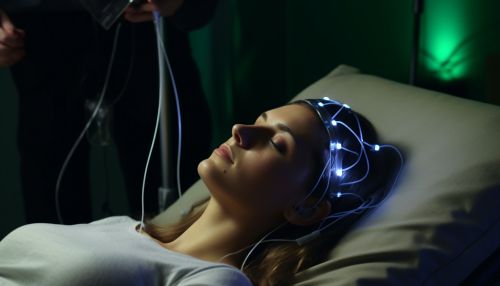Neurofeedback
Introduction
Neurofeedback, also known as EEG biofeedback, is a type of biofeedback therapy that uses real-time displays of brain activity—most commonly electroencephalography (EEG)—to teach self-regulation of brain function. This therapeutic intervention is used in the treatment of various neurological and mental health disorders, including attention deficit hyperactivity disorder (ADHD), anxiety, depression, and others.


History and Development
The concept of neurofeedback has its roots in the early 20th century with the discovery of the EEG by Hans Berger. However, it was not until the 1960s and 1970s that the first neurofeedback protocols were developed, primarily for the treatment of epilepsy. The field has since evolved, with advancements in technology and a growing body of research contributing to its development and application.
Principles and Techniques
Neurofeedback is based on the principles of operant conditioning, a type of learning in which behavior is strengthened or weakened by the use of reinforcement or punishment. In the context of neurofeedback, the individual learns to control their brainwaves, which are measured by an EEG, and receives feedback in the form of visual or auditory signals.
There are several techniques used in neurofeedback, including:
- Amplitude training: This involves training the individual to increase or decrease the amplitude of specific brainwave frequencies.
- Coherence training: This focuses on the synchronization between different regions of the brain.
- Slow Cortical Potential (SCP) training: This aims to regulate the slow potentials in the cortex, which are associated with attention and cognitive processes.
Applications and Efficacy
Neurofeedback has been applied in the treatment of a variety of conditions, including:
- Attention Deficit Hyperactivity Disorder (ADHD): Numerous studies have shown that neurofeedback can improve symptoms of ADHD, including inattention, impulsivity, and hyperactivity.
- Anxiety and Depression: Neurofeedback has been used to help regulate the brain's response to stress and improve mood regulation.
- Epilepsy: Early research in neurofeedback focused on its potential for reducing seizures in individuals with epilepsy.
While there is a growing body of evidence supporting the efficacy of neurofeedback, it is important to note that more research is needed to fully understand its mechanisms and optimize its use.
Future Directions
The field of neurofeedback is continually evolving, with ongoing research exploring new applications and techniques. Future directions may include the integration of neurofeedback with other therapeutic interventions, the development of personalized neurofeedback protocols based on individual brain patterns, and the use of advanced neuroimaging techniques to enhance feedback.
